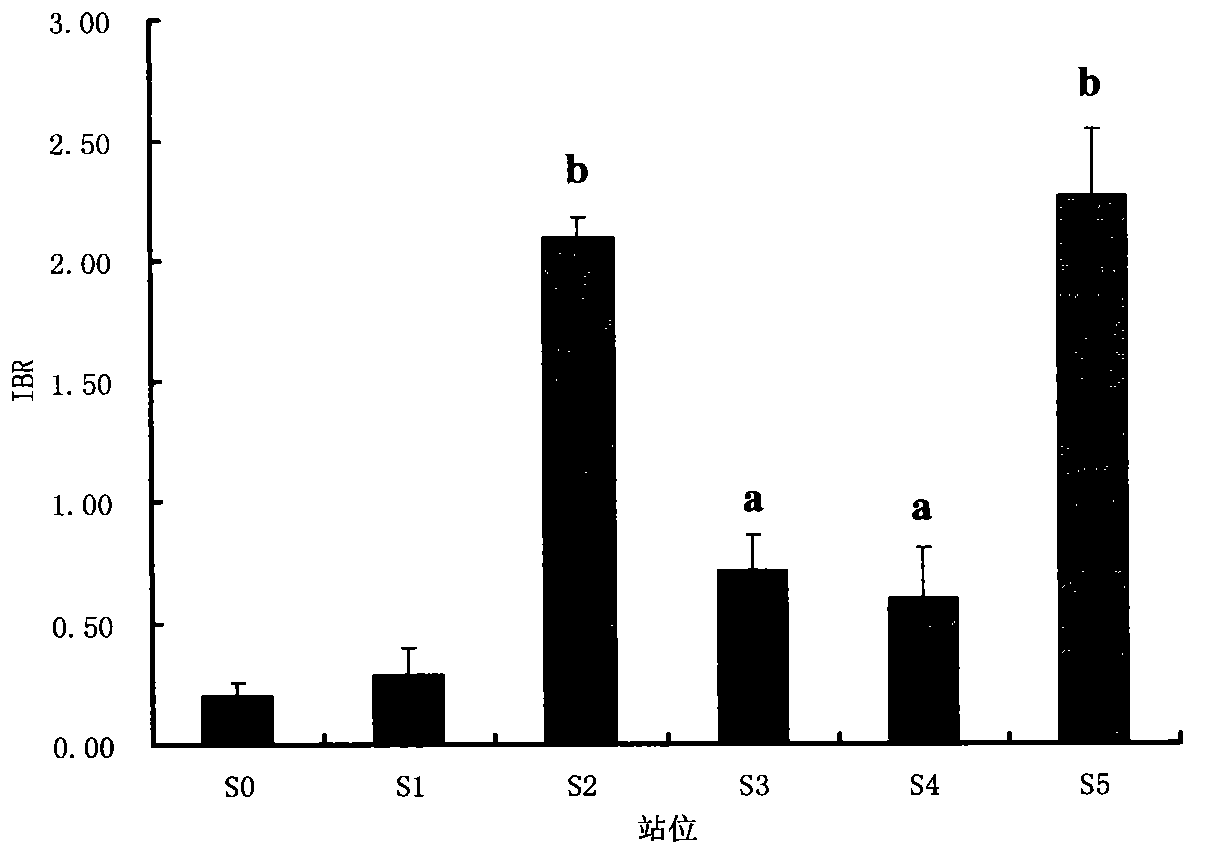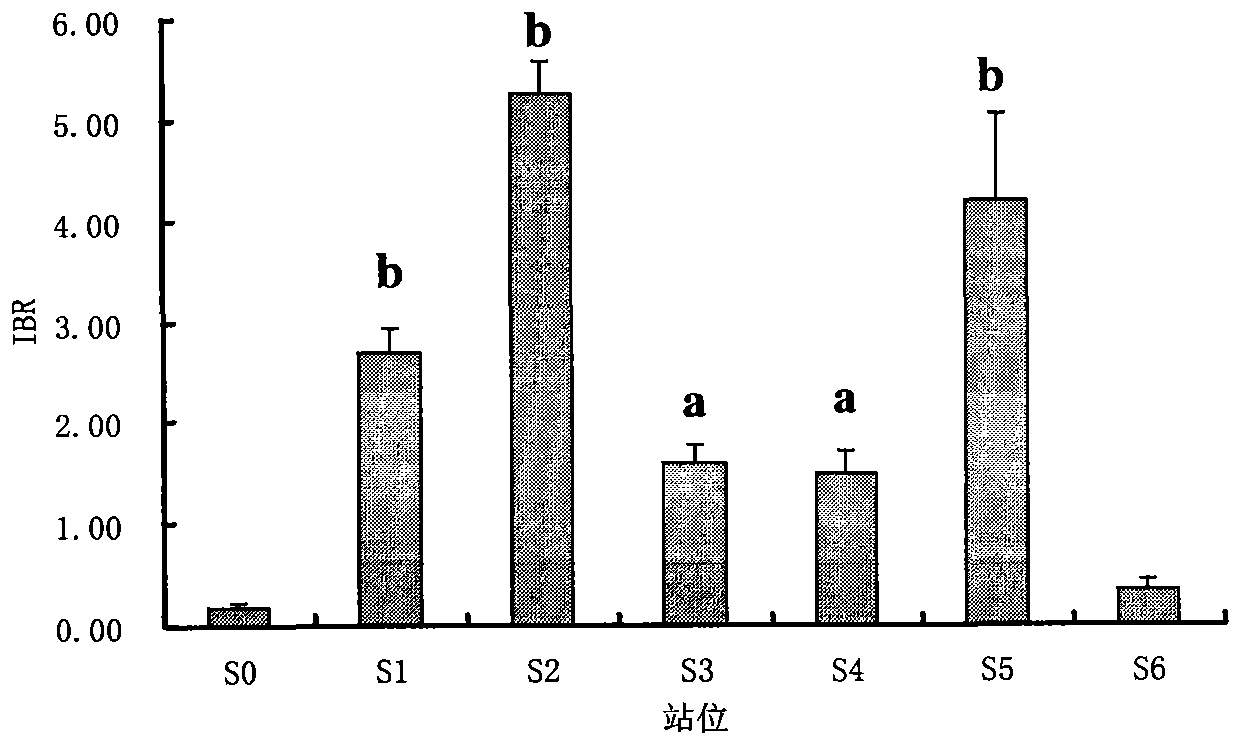Shellfish monitoring method for ocean oil spill pollution base on integration biomarker method
A biological marker, oil pollution technology, applied in the field of biological monitoring environment, can solve the problems of not being able to truly and comprehensively reflect the pollution status of marine oil spills, the accuracy of marine oil spill pollution is not high, and the dose-effect relationship is not ideal. Accurate assessment and prediction of risks and development trends, clear environmental characteristics, and small systematic errors
- Summary
- Abstract
- Description
- Claims
- Application Information
AI Technical Summary
Problems solved by technology
Method used
Image
Examples
Embodiment 1
[0036] Embodiment 1: A method for monitoring shellfish polluted by marine oil spills based on the integrated biomarker method of the present invention adopts the following process steps:
[0037] The experimental subject organism, Philippine clam, was taken from the Hongdao Breeding Area of Qingdao City. Wash them before the experiment, take them back and put them in the laboratory aquarium (130cm×50cm×60cm) for 5-7 days for later use. The water used in the experiment was natural seawater along the coast of Qingdao, which was treated by sand filtration. The salinity was 29.08±0.18, the pH was 7.85±0.03, and the temperature was (21.05±0.43)°C. During the temporary cultivation period, the water was continuously aerated and the water was changed every 24 hours. Feed Chlorella (3×10 6 individual / mL), feeding 2 times a day. During the holding period, the experimental shellfish had normal activities and were healthy and disease-free. Select 30 Philippine clams of uniform size a...
Embodiment 2
[0039] Embodiment 2: A method for monitoring shellfish polluted by marine oil spills based on the integrated biomarker method of the present invention adopts the following process steps:
[0040] The test organism Chlamys farreri was taken from Changdao breeding area in Shandong Province. Wash them before the experiment, take them back and put them in the laboratory aquarium (130cm×50cm×60cm) for 5-7 days for later use. The water used in the experiment was natural seawater along the coast of Changdao, treated by sand filtration, with a salinity of 29.25±0.18, a pH of 7.81±0.03, and a temperature of (21.21±0.43)°C. During the temporary cultivation period, the water was continuously inflated and changed every 24 hours. Feed Chlorella (3×10 6 individual / mL), feeding 2 times a day. During the holding period, the experimental shellfish had normal activities and were healthy and disease-free. Select 28 scallops of uniform size and specification (shell length: 4.9-5.1cm; shell hei...
PUM
 Login to View More
Login to View More Abstract
Description
Claims
Application Information
 Login to View More
Login to View More - R&D
- Intellectual Property
- Life Sciences
- Materials
- Tech Scout
- Unparalleled Data Quality
- Higher Quality Content
- 60% Fewer Hallucinations
Browse by: Latest US Patents, China's latest patents, Technical Efficacy Thesaurus, Application Domain, Technology Topic, Popular Technical Reports.
© 2025 PatSnap. All rights reserved.Legal|Privacy policy|Modern Slavery Act Transparency Statement|Sitemap|About US| Contact US: help@patsnap.com



